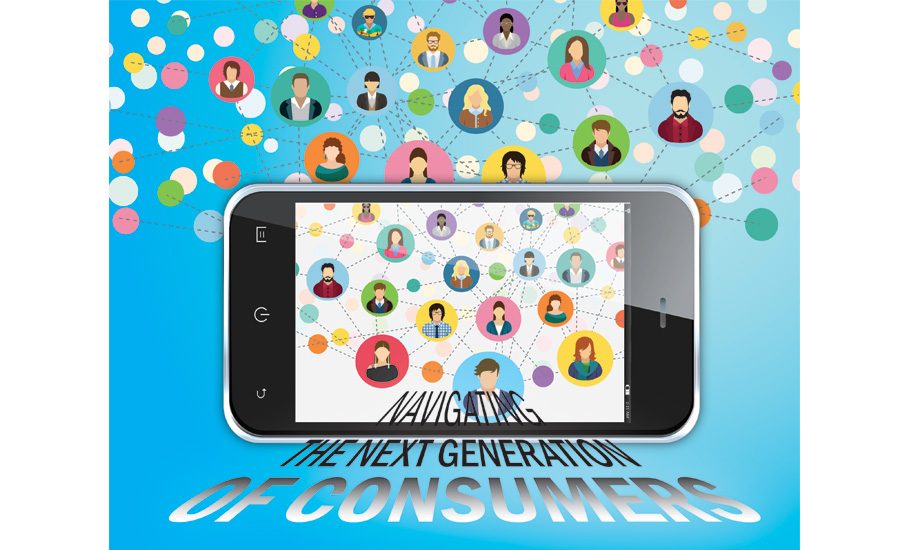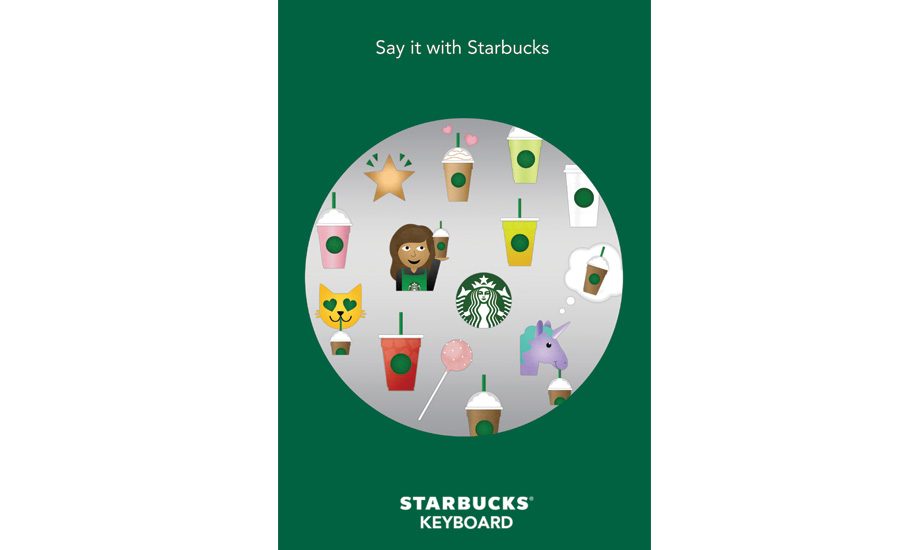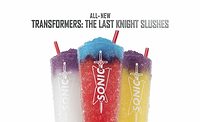Navigating the next generation of consumers
iGeneration embraces diversity, visual communications






Whether it’s social media platforms, mobile pay apps or an increasing acceptance of RFID chips in humans, technology has transformed everyday life for consumers. Although previous generations have learned to adapt to these technological advancements, one generation has grown up during a time in which this technology is the norm.
Generation Z, also known as the iGeneration, are what many market research experts have coined as digital natives due to an upbringing where technology always has been part of their everyday lives.
“They’re digital natives. They don’t know life before technology,” says David Henkes, advisory group senior principal for Chicago-based Technomic, a Winsight company. “Millennials, especially the older millennials, some of them are pre-iPhone and pre-Facebook and stuff like that, so Generation Z are really the digital natives. They grew up with social media and smartphones, so they don’t know life before technology and it is just incorporated naturally in their everyday life.”
According to Chicago-based Mintel’s April 2016 report titled “Marketing to the iGeneration – US,” the generation spans a 13-year timeframe of those born between 1995 and 2007, accounting for 54.6 million Americans or approximately 17 percent of the U.S. population.
Socially inclined
Among the popular topics that are referenced when discussing the iGeneration is its social media usage or, perhaps more aptly noted, its diverse social media usage.
“When you look at social media — and again they grew up in this age, so they’re using all the social media platforms — they’re using more social media platforms. Things like Instagram and Snapchat and Tumblr are a lot more engrained in their everyday lives than they are for older consumers, so there’s a lot more social media platforms that they utilize,” Technomic’s Henkes says. “I think Facebook, because of Facebook’s ubiquity, is the No. 1 social media platform, but if you look at the index of where Gen Z is, [it’s] way ahead of the other generations in way of these newer social media platforms.”
These more visually focused social media channels as well as other forms of visual communications — emojis; GIFs, or animated images; and memes — have resulted in companies targeting this form of visual language to reach the iGeneration.
“Companies have jumped on visual communications in an effort to connect with this fluid generation by introducing branded and transactional emojis,” Mintel’s report states. “In 2015, at least 250 brands created their own emoji keyboard, which may indicate that brands have reached ‘peak emoji.’”
The report adds that 2016 might have seen a decline in emoji use; however, the next wave of technology including in-app video platforms could gain steam. “For marketers looking to tune into iGens, staying ahead of these trends will be key to making an impact,” Mintel states.
However, when it comes to the iGeneration, the focus is not only on where the communication happens, but the type of communication that occurs. Citing a February 2015 survey of 1,500 Internet users aged 9-17, Mintel’s research found that 74 percent of respondents like social media posts that are funny. The next closest were those that feature music with 63 percent.
Adult iGens also exhibited an affinity for humor as 75 percent of survey respondents listed humorous as the word or phrase that describes social media posts that they most enjoy. However, it should be noted that the February 2015 survey of 18-21 year olds included only 209 Internet users. Other content listed by adult iGens were artistic with 55 percent and music-related with 50 percent.
Technomic’s Henkes highlights the value that brands should place on social media in order to reach younger consumers.
“Up to one-third of Gen Z say they follow foodservice via social media, so not only do they have friends and followers on social media, but they also are following and learning about brands and the different things on social media, so that’s certainly something there,” he says. “What that means is that in order to reach these younger consumers, and millennials would be included in there as well, a lot of brands/chains develop social media campaigns and have much more of an online marketing campaign than perhaps would be used to reach the older generations.”
Yet, Henkes notes that Generation Z’s digital native status extends beyond social media to all things tech, like delivery and cashless payment.
“Tech more broadly, when you look at it, they certainly look at the convenience and the interaction that it provides,” he explains. “Gen Z are much more likely to be interested in delivery off-premise consumption. A lot of that is driven by app-based ordering and social media, the ability to order through social media, so those types of things are much more critical to them than the older generations.”
For example, 46 percent of Generation Z consumers indicate the ability to order online is important for takeout and delivery occasions, Henkes says.
In Technomic’s “Generational Consumer Trend Report,” in which it defines Generation Z as those born between 1993 and 2003, the market research firm lists tech-based amenities as one of the key themes, noting that Gen Z and millennials are driving this demand.
“Tech-based amenities enhance convenience and speed and may help to differentiate for the short term,” the report states. “They can also help personalize the experience and foster connections like in the case of the tabletop tablets that provide games for customers to play.”
This theme also notes the highest interest of tech-based amenities is in the form of online ordering and prepay options. Henkes suggests that cashless will continue to be of importance for Generation Z as they gain spending power.
“I think when you look at Apple Pay or smartphones, a cashless system that appeals to younger consumers because of its speed, because of the sustainability message it interlays with mobile apps, loyalty programs and all of that go into it,” he says. “You see a lot of the [quick-service restaurants] (QSRs) investing in it, Starbucks, Dominos, Taco Bell all of those. McDonalds is rolling out its new loyalty program, so a lot of those things are much more relevant and important to the younger generation than they are perhaps to the older generation.”
Diversity and celebration
Although technology is one of the largest trends associated with the iGeneration, market research also indicates that this generation is among the most diverse within the United States.
“Compared to older generations and the total population, the iGeneration is culturally diverse. More than one quarter of iGens are non-white compared to 23 percent of the overall population,” Mintel’s report states. “The most significant shift is seen by Hispanic origin. Nearly a quarter of the iGeneration is Hispanic compared to 18 percent of the overall population. Even though the majority of iGens are white, the generation has been exposed to significantly more diversity than generations in the past.
“Incorporating multicultural characters and themes is not only important for marketers looking to target multicultural iGens,” the report continues. “White iGens are likely to appreciate diversity in the marketing as it reflects the world around them.”
In addition to its diverse makeup, the iGeneration also is influenced by socially responsible practices, according to Technomic’s report.
Henkes notes that this fact is important for brand owners when they look to appeal to Generation Z.
“When you look at things like social responsibility, corporate social responsibility, I think a lot of those themes resonate with those younger consumers, so again that becomes a marketing message to them,” he says. “Some of that relates back to the story that you’re telling about the food — the part that relates back to being seen as a good corporate citizen and doing the right thing. I think, to some degree, that puts big brands at a little bit of a disadvantage because a lot of these new and emerging socially responsible brands really do a good job of resonating with these younger consumers.
“Sometimes it’s hard for really big CPG companies to have a story,” he continues. “Everybody has a story, but [it needs] to be one that’s relevant and believable, something that relates back to these younger consumers.”
The importance that Generation Z has placed on social responsibility aligns with millennials and Generation Xers; however, given the influence this has had on Generation Z, it could help foster long-term brand loyalty, according to Technomic’s report.
“Supporting causes, especially those that directly impact younger generations, and sourcing sustainably when possible could help garner brand loyalty and interest,” the report states. “This may particularly appeal to Gen Zers, who are most likely to be influenced by healthy menu options.”
Health and wellness is important to Gen Zers, but because most still are teenagers, health is not a top priority across the board, Henkes notes.
“When we talk about health and wellness, ‘healthy’ doesn’t resonate as much, but transparency, the story of the food, things like that certainly resonate with those types of consumers,” he says.
Yet, Henkes does expect health and wellness to gain prevalence for Generation Z as they enter adulthood. “[A]s consumers age, certain things become more important to them and certain things become less important,” he explains. “Presumably, Gen Z will follow some of that trajectory, but they’re growing up in a whole different age and it will be interesting to see and watch how a lot of these trends play out with them and what ends up being important to them when they are in their late 20s, 30s, even 40s and how different they’re going to be than today’s Gen Xers are.”
In Mintel’s report, the market research firm notes that the iGeneration grew up when health and wellness was paramount.
“iGens are growing up in an era where the focus [is] on health,” the report states. “First lady Michelle Obama’s influence in this sense can’t be understated. From exercise to gardening, healthy living and [the] war on obesity are front-and-center in the public psyche. As iGens mature through different life stages, the strong messages in their formative years about the importance of healthy living are likely to influence future choices.”
What they crave
Although the iGeneration’s spending power still is emerging, brand owners looking to tap into the disposable income that they do have should target key product attributes.
“Things like taste and craveability are the driver of a lot of their food selections” Technomic’s Henkes says. “I’d say at this point because they’re so value-focused, things like quality and freshness don’t elevate as much as taste and craveability. You see a lot of these chains like Taco Bell have emerged that focus on the craveability and the taste rather than the overall high quality or whatever.
“It really focuses on taste, and craveability is what drives a lot of their selections right now,” he continues. “Restaurants are a place for them to socialize. Starbucks has been in the business of providing that third place for decades, but restaurants are one of those — and we see this with millennials as well — they’ve grown up as restaurant and foodservice consumers so very naturally they gravitate toward restaurants as a gathering place, as a social place and really trying to make that personal connection and use restaurants to do that.”
And because roughly two-thirds of Generation Z is below the legal drinking age, not much data can be applied to this sector of the beverage market. Henkes notes that it is hard to make broad, sweeping presumptions about their beverage habits given their age. However, he notes they have already shown gravitations to specific beverage categories.
“When you look at what stands out, soft drinks are still the No. 1 drink, but places where they over index or where they seem to be consuming more than other cohorts would be bottled water, milk shakes they seem to over index on a little bit, and smoothies,” he explains. “Older Gen Z than younger Gen Z is likely to drink hot coffee as well. A lot of this starts getting into where are you measuring because older Gen Z are going to be adults and in college or in the workforce, so [they] are more likely to drink coffee than younger Gen Z. ... As a generation, I’d say they’re increasingly seeking coffee [and] even iced tea. Things that they’re less likely to drink include fruit juice probably some of that is due to the sugar content.”
Other market research firms also have explored the consumption habits of adult iGens. Last year, Beverage Marketing Corporation (BMC), New York, and Boston-based Fluent released data related to beverage choices of college-aged Gen Zers. The survey was conducted March 15-21, 2016, and polled 1,010 undergraduate respondents across the country. One-third were younger than 21.
According to the 2016 report, bottled water was the No. 1 beverage purchase with 43 percent consuming it seven times a week. The next most popular was coffee, both in the hot and iced versions, with 22 percent. Brewed tea came in at third with 12 percent listing it, followed by beer at 9 percent.
“From early-kindergarten lectures to constant health-related headlines on their phones, this generation knows about having to proactively make their own choices and not just take things at face value,” said Michael Carey, executive vice president for Fluent, in a statement released last year. “And while they reach for water first, there are opportunities for other beverages to fill niche roles, if they know where to look.”
When it comes to future consumption, Fluent and BMC’s research also found that bottled water was a top choice. Forty-two percent plan to drink more bottled water, while 8 percent plan to drink less. Brewed tea also fared well for future consumption with 22 percent planning to drink more versus 7 percent planning to drink less.
However, carbonated soft drinks were not as favorable with Generation Z, as 33 percent stated they were planning to drink less versus the 3 percent that indicated they will drink more.
Within the alcohol sector, 74 percent of survey-takers said that they consume alcohol. Among those who do drink alcohol, beer was the most prominent with 37 percent indicating they drink it more than other alcohol beverages. Spirits and wine were not far behind, though, with 32 and 29 percent, respectively.
As Generation Z/iGeneration continues to enter adulthood, it is likely that brand owners will continue to seek data on this group in order to know the best ways to reach them and support their CPG purchases.
“Though the iGeneration is unique in some ways — half have provided a social media handle in lieu of a phone number and 67 percent say they influence others through social media — brands do not necessarily need to start at square one when marketing to iGens,” Mintel’s report concludes. BI
Looking for a reprint of this article?
From high-res PDFs to custom plaques, order your copy today!








